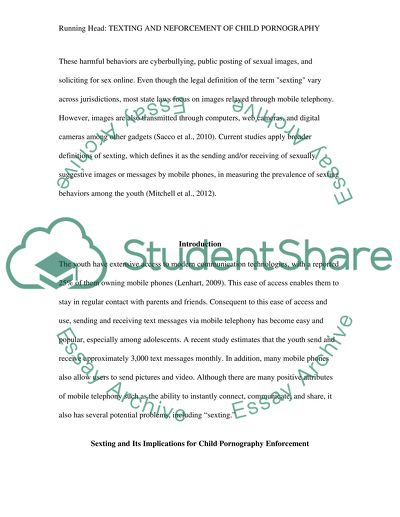Cite this document
(“What is 'sexting', and what does it mean to the current enforcement of Essay”, n.d.)
What is 'sexting', and what does it mean to the current enforcement of Essay. Retrieved from https://studentshare.org/information-technology/1663875-what-is-sexting-and-what-does-it-mean-to-the-current-enforcement-of-child-pornography-laws-are-minors-putting-themselves-at-risk-for-a-lifetime-of-hell
What is 'sexting', and what does it mean to the current enforcement of Essay. Retrieved from https://studentshare.org/information-technology/1663875-what-is-sexting-and-what-does-it-mean-to-the-current-enforcement-of-child-pornography-laws-are-minors-putting-themselves-at-risk-for-a-lifetime-of-hell
(What Is 'Sexting', and What Does It Mean to the Current Enforcement of Essay)
What Is 'Sexting', and What Does It Mean to the Current Enforcement of Essay. https://studentshare.org/information-technology/1663875-what-is-sexting-and-what-does-it-mean-to-the-current-enforcement-of-child-pornography-laws-are-minors-putting-themselves-at-risk-for-a-lifetime-of-hell.
What Is 'Sexting', and What Does It Mean to the Current Enforcement of Essay. https://studentshare.org/information-technology/1663875-what-is-sexting-and-what-does-it-mean-to-the-current-enforcement-of-child-pornography-laws-are-minors-putting-themselves-at-risk-for-a-lifetime-of-hell.
“What Is 'Sexting', and What Does It Mean to the Current Enforcement of Essay”, n.d. https://studentshare.org/information-technology/1663875-what-is-sexting-and-what-does-it-mean-to-the-current-enforcement-of-child-pornography-laws-are-minors-putting-themselves-at-risk-for-a-lifetime-of-hell.


